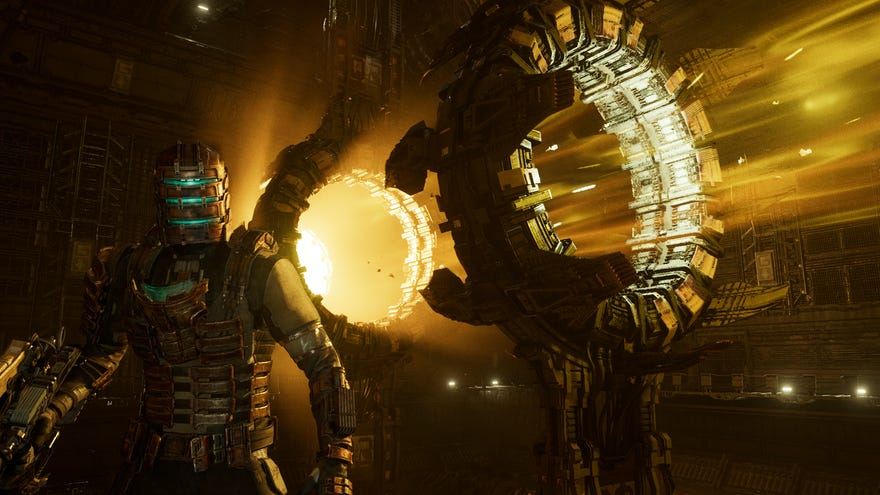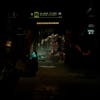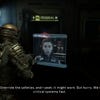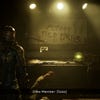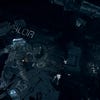Dead Space review: an excellent remake of a horror classic
A little star
Well. They certainly remade Dead Space. With some small but welcome exceptions, Dead Space is a one-to-one remake of the 2008 original.
Your opinion on whether that is a good thing or not will depend on how you feel about the endeavour of remaking games from fifteen years ago in the first place. As far as I’m concerned, this remake allowed me to replay one of my all-time favourite games in a lavish new form, and in that sense, Dead Space is extraordinary.
For the uninitiated, Dead Space follows engineer Isaac Clarke who is sent on a routine repair mission to the USG Ishimura. The humongous planet cracker has been having issues with its communication equipment and definitely hasn’t been invaded by a hostile alien virus that’s made all of its crew long and dribbly. Oh no! That’s exactly what’s happened! Trapped on board, Isaac must bounce from one end of the Ishimura to the other like a gore-flecked pinball, firefighting an increasing array of mechanical issues all while battling hordes of stabby baddies.
Killing said baddies isn’t as simple as popping a bit of lead into their squishy bits. Dead Space’s whole thing is that the heavily mutated necromorphs that have infested the ship are so determined to pierce you with their gross bone blades that they can only be stopped if all of their limbs are forcibly separated from their torso. You do so not with guns but with tools, pieces of engineering equipment that slice and rip through flesh and bone as easily as iron and steel. Your starting weapon - the Plasma Cutter - still feels remarkable in the hands, its secondary fire allowing you to change the angle of your fizzing slices to better remove arms, legs and various other fleshy growths.

This particular rhythm of combat remains unique to Dead Space. Being forced to focus your attacks on individual limbs makes even small groups of enemies a substantial threat, the tension increasing as you attempt to aim for an individual joint through a sea of encroaching snarls. This remake makes combat a touch tighter. A little snappier. Nothing major, but it arguably didn’t need to be reworked. The most noticeable addition is what developer Motive refers to as the (and I’m sorry you have to read these next two words placed together) “Peeling System”. Shooting limbs will strip back skin, muscle and sinew, visually indicating which appendages are close to dropping off so you can take more calculated shots. It’s absolutely disgusting, but in the same way as popping a pimple or pulling a cluster of syrupy hair out of a bathroom drain. It churns your stomach but, you know, it’s also, sort of, like, it scratches an itch, yeah? Let’s move on.
Weapons, too, have received a general touch-up to make them as viable as the mighty plasma cutter. New secondary fire modes provide you with additional options during combat - especially when facing off against larger crowds - while visual and audio feedback has been tweaked to make everything pop. For the first time ever, I willingly used weapons other than the plasma cutter while fighting through the Ishimura. A genuine improvement compared to the original. The contact beam in particular now sports a devastating alt-fire that unleashes a single concentrated laser blast so powerful it practically melts anything unlucky enough to stand in its way. Why faff about slicing off limbs when you can just turn solids into gas instead?
Elsewhere, annoyances such as the (rancid) asteroid shooting minigame and the rigid anti-gravity jumping bits have been completely reimagined, with the latter now allowing you to fly freely like in the sequels. You no longer have to travel between sections of the Ishimura by tram, either. Chapters start and end naturally as you explore, and most areas of the ship are now reached through cramped maintenance tunnels or via other methods, with the tram resigned as a fast way to backtrack if you so desire. Everything is more cohesive. Isaac’s experience now a singular journey rather than a collection of fixed levels.
Speaking of Isaac, Isaac now speaks. This was the change that worried me the most, as the suffocating isolation of the original was one of its finest features. Thankfully, Isaac may chat but he is not chatty. He does not provide hints for puzzle solutions or bark about where he should head to next. Most of what he says is made up of lines spoken by other characters in the first game, comments about engineering stuff that makes far more sense coming from Issac rather than computer specialist Kendra or security officer Hammond. He is largely still a silent protagonist. At least where it matters most.

Gunner Wright, who voiced Isaac in the sequels, delivers a brilliant performance here. Confident without being quippy. Stoic. Gently slipping away from reality as a result of his declining mental state. He’s not alone. The entire cast is on top form here, and together they breathe new life into the game’s story without sacrificing the shlocky core that made it so loveable in the first place. The narrative itself is expanded, too, thanks to the addition of side quests and holographic video logs that shed light on a few of the original’s darker edges. Particular focus is given to the relationship between Isaac and his partner Nicole who is stationed aboard the Ishimura, the mysterious church of Unitology and the unhinged Dr Mercer who serves as the de facto villain of the piece. Everything is polished up. Tightened slightly. Are you sensing a theme here?
It's still a wonderful story, though. John Carpenter's Event Horizon. Grisly and silly. A brilliantly paced yarn that touches on religious zealotry, body transformation, betrayal, mistrust, and madness! Madness in its purest, most Victorian form. Quiet voices that whisper sweet songs in your ears as you pause to organise your inventory. Things that appear before you that you can't quite believe. Play this game in the dark with headphones on. Trust me on that.
The biggest difference is obviously the visuals, and Dead Space looks absolutely phenomenal. Lighting in particular is remarkably implemented, pouring into dark corridors and illuminating spaces with a sinister orange glow. There’s a sense that the Ishimura itself, not just its crew, is subject to the decay and the rot of the alien infection. Lights flicker and fizz. Dust, grime and blood coat every surface. The shimmer of flame reflects accurately off the bronze panels of Isaac’s suit. Seeing classic areas from the original rendered in such vivid detail is a particular thrill.
Oh and the machines! Dead Space has great machines. Rattling engines. Chunky buttons. Crunchy doors. Even on its deathbed, the Ishimura is frighteningly alive.
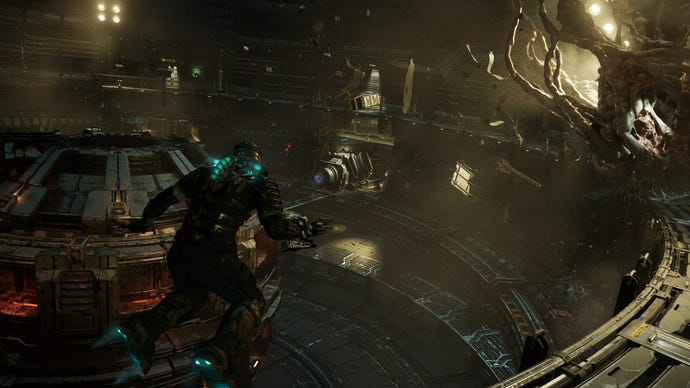
But, and I hate that there’s a but, but there is. Dead Space’s performance on PC could be better. On my 3080 the game was more than capable of hitting high frame rates on its ultra preset, but no amount of fiddling in the settings could prevent stuttering when entering new areas or seemingly random doors. Even when installed on an SSD, Dead Space features infrequent but noticeable micro-stutters. It’s a blight on what is largely a very solid release, an occurrence frequent enough to dull its brilliance. Maybe it’ll be patched. I really hope it’s patched.
In many ways, Dead Space is a stunning example of how far games have progressed, in terms of lighting, sound design, structure, and vocal capture. It also highlights how little the language of games - particularly third-person shooters - has changed over the last fifteen years. The main difference between Dead Space and 2019s Resident Evil 2 remake (to which this game will undoubtedly be compared) is that the original Dead Space still feels like a modern game. The source material is playable. Enjoyable. Not as obvious a candidate for a modern refresh.
Despite this, the Dead Space remake is brilliant. Enhanced. Upgraded. Put together carefully by caring hands. Nothing is broken, except that which begged to be replaced. Iron out those stuttering issues and what you have here is one of the best action-horror games I've ever played.
Did Dead Space need a remake? Yeah. Sure. Why not. This is now the best way to experience Visceral’s horror classic, luxuriously improved in small but considered ways. Especially for those new to the series. And for those who've already played it? I mean, it's Dead Space. Again. But better.
